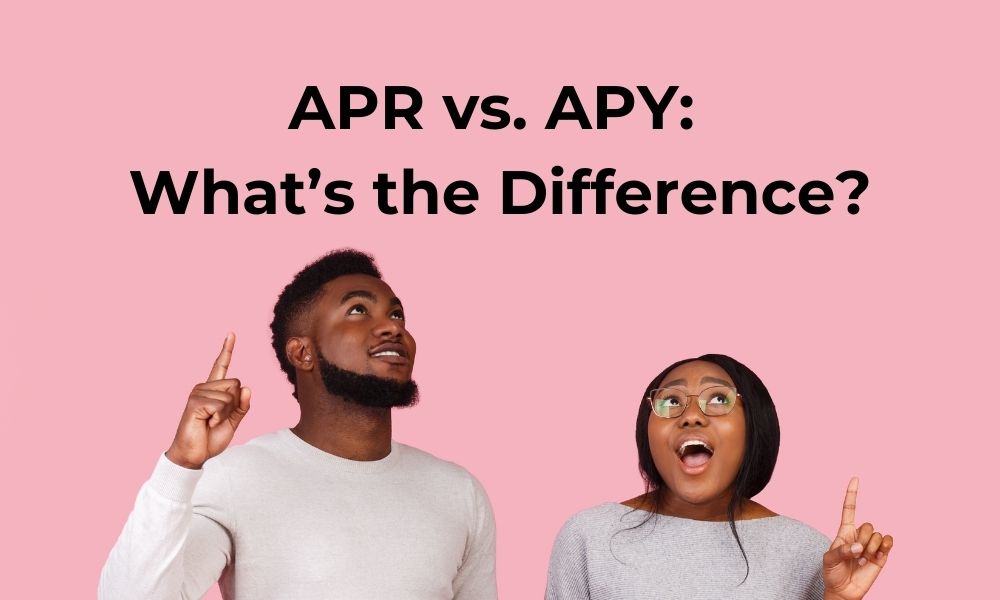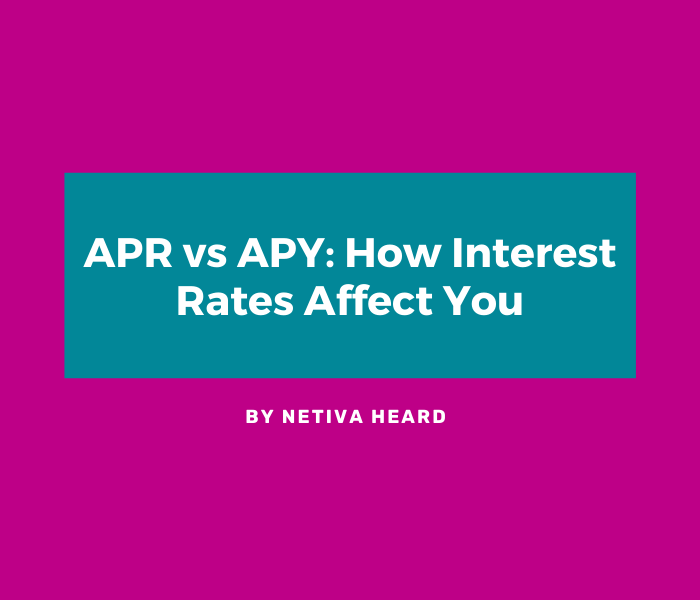If you’re shopping for an important purchase like a vehicle, you generally take your time and do your research. You get all the details on the vehicle’s fuel efficiency, gas mileage, operating costs, and so on. Credit products and investments have an even greater impact on your financial life; do you do the same investigation for them?
For most people, the answer is “no,” and it’s partially because they don’t understand a lot of the jargon or how to judge whether certain numbers are good or bad. Today, we’re breaking down one of the top questions about credit and investment products: what’s APR, what’s APY, and why do they matter?
APR vs. APY: What’s the Difference?

You might notice that some credit card companies and financial institutions advertise an APR for their products and others advertise an APY, and some may list both. While these terms both relate to interest, there are critical differences.
APR stands for “annual percentage rate.” It’s the straightforward interest rate you’ll pay each year.
Note that APR is your annual interest, but in many cases, interest is either charged or earned monthly. If you divide your APR by 12, this gives you the amount of interest you’d pay each month.
APY, on the other hand, stands for “annual percentage yield.” The difference is that APY takes compound interest into account, while APR doesn’t.
What Is Compound Interest?
In the vast majority of financial products, your interest is added to your principal. When this happens, it’s called compounding.
Let’s say you have a $1,000 balance and you’re charged 1% interest each month in compounding interest. The first month, your principal balance is $1,000, but the next month, the interest is added to your principal balance, making it $1,010.
When the following month rolls around, you’re not just paying interest in the $1,000. You’re paying it on the new principal balance of $1,010. This is called compounding interest.
When you see an APR and an APY, the APY shows you how much interest you’ll actually pay because it accounts for compounding interest. APR does not.
Should I Evaluate Accounts by Their APR or APY?
In general, you want to look at the APY for a more accurate view of the interest you’ll pay or earn on a financial product.
There are two rare exceptions in which the APR and APY are the same. The first is if the financial product uses simple interest rather than compound interest. In this case, the interest is paid separately and it isn’t truly added to the principal.
The second exception is if the financial product has 0% interest. Keep in mind, though, that this is usually just a temporary promotional rate (after all, the company has to make money somehow). In those situations, it’s still a good idea to know what the APY will be when the promotional period is over.
Why Do I See Some Institutions Advertise APR While Others Advertise APY?
You’ll notice that financial institutions are advertising some products with their APRs and others with their APYs. The answer is simple: they choose the one that makes the product look better.
For products in which you pay interest (like credit cards and loans), the institution wants the interest rate to look lower, so they use the APR. For products in which you earn interest (such as CDs and savings accounts), they want the interest rate to look higher, so they use the APY.
Remember that regardless of which one is advertised, every financial product with interest has both an APR and an APY. It’s important to always know the APY in order to truly know the interest you can expect.
Why Do Some Accounts Show a Larger Difference Between the APR and APY?
In cases when the financial institution lists both the APR and the APY for a product, you’ll notice that there is a larger difference between the two in some cases than in others. Why?
It comes down to how often the interest is compounded. For interest, if the interest is compounded monthly (as opposed to quarterly or annually), you’ll ultimately end up with more interest affecting your APY throughout the year. This creates a larger difference between the APR and APY.
How Do I Know How Much Interest I’ll Pay or Earn?

As we noted, you always want to look at the APY for an accurate understanding of the interest on a financial product. What if you only see the APR listed, though?
All you need to know to calculate the APY is the APR and how often the interest is compounded. You can plug this into a simple APY calculator to get the APY.
Knowing the Facts and Making Smart Financial Decisions
Credit cards, investment accounts, loans, and other financial products are just that: products. The difference is that they can have a serious impact on your financial health, so it’s particularly important to understand what you’re “buying.” To expand on your knowledge, check out more of our financial blogs.









